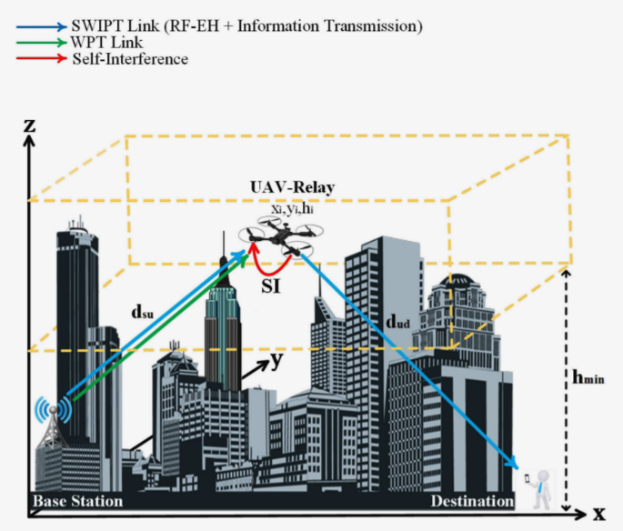
Image Credit: Tomsk Polytechnic University.
The international project titled “Self-Energised UAV-assisted Communications for 5G Wireless Networks” is led by Dr Dushanta Nalin Jayakody, Professor of the TPU Research Center for Automation and Information Technology. Prof. Jayakody says energy efficiency is one of the main problems in new generation networks and telecommunications.
The researchers have conceptualized an option to employ drones to offer wireless communications. Specifically, they have created an algorithm to improve the UAV trajectory profile that offers information transfer and energy harvesting over long distances.
Due to the limited power supply, the performance and efficiency of the system is affected directly. For this reason, UAV energy management should be optimized to prevent the reducing in flight duration. The conventional energy harvesting mechanisms such as solar, wind energy may lead to significant increases in overall UAV’s weight due to the additionally introduced hardware.
Study Researchers
The research team from TPU has put forward the concept that involves integrating the energy management scheme by using wireless power transfer (WPT), simultaneous wireless information and power transfer (SWIPT), and self-interference energy harvesting (EH) frameworks in collective relay communication in full-duplex mode.
UAVs are employed as a relay to support and forward information to the mobile users in full-duplex (FD) mode. The radiofrequency EH mechanism offers an advanced solution to the energy constraint problem of the UAVs. The researchers improved the sensing and transmission power of the UAV by maximizing the energy efficiency and reducing the probability of outage of the UAV.
“Unmanned Aerial Vehicles have recently been envisaged as an enabling technology of 5G and act as an intermediate relay node to facilitate uninterrupted, high-quality communication between information sources and their destination,” noted Dr Nalin Jayakody.
Full Duplex communication efficiency utilizes the spectrum resources while enhancing the overall system throughput as compared to half-duplex (HD). We use the FD in the proposed UAV-assisted cooperative communication scheme to improve the overall system performance.
Dr Dushanta Nalin Jayakody, Professor, TPU Research Center for Automation and Information Technology
According to Tarindu Perera, a member of the project team and research engineer of the TPU Division for Information Technology, the cooperative communication between two remote movable nodes is a new, potential area powered by the Internet of Things.
Recently, UAVs and aerial base stations (ABSs) have gained considerable attention from researchers and engineers owing to the high data rate requirements of mobile users. ABSs prove greatly beneficial for serving flash crowds, in which a huge group of people requires high data rates.
Furthermore, low cost, deployment flexibility and high mobility are the advantages UAVs offer over terrestrial wireless communication infrastructure. These advantages encourage deployment of UAVs in wireless communication to provide reliable support for practical applications, such as disaster management, public safety, rescue and military operations etc.
Study Researchers
The study was financially supported by the SPARC Foundation, the TPU Competitiveness Enhancement Program, the Qatar National Research Foundation, and the Ministry of Human Resources, India.
Journal Reference:
Jayakody, D. N. K., et al. (2020) Self-Energized UAV-Assisted Scheme for Cooperative Wireless Relay Networks. IEEE Transactions on Vehicular Technology. doi.org/10.1109/TVT.2019.2950041.